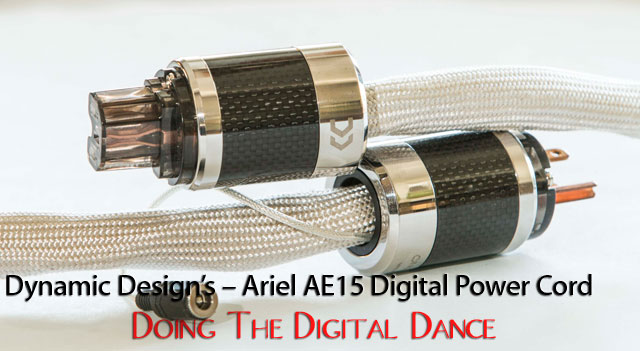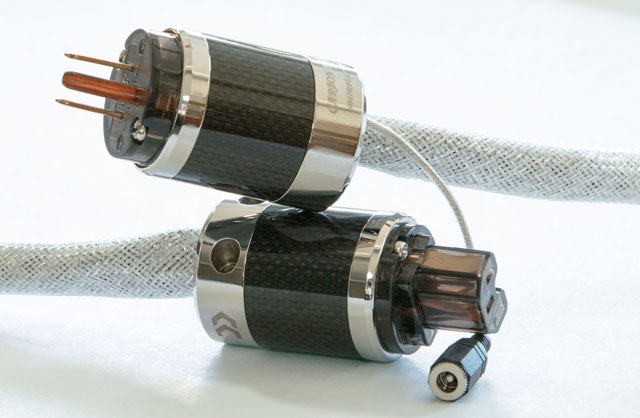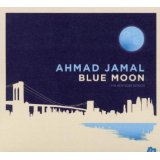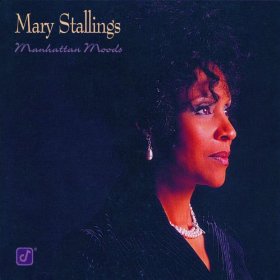Dynamic Design Ariel AE15 Digital AC powercord

 Throughout my long journey in the high-end audio industry, there has been a fairly wide acceptance that the primary function of cables, particularly interconnects and speaker types, is to pass along the audio signal and do the least amount of harm. Essentially that translates into these products getting out of the way and preserving the integrity of the signal, as it passes through our various components, until it finally reaches the speaker. I realize this is a rather simplistic view regarding the role of cables but there is more.
Throughout my long journey in the high-end audio industry, there has been a fairly wide acceptance that the primary function of cables, particularly interconnects and speaker types, is to pass along the audio signal and do the least amount of harm. Essentially that translates into these products getting out of the way and preserving the integrity of the signal, as it passes through our various components, until it finally reaches the speaker. I realize this is a rather simplistic view regarding the role of cables but there is more.
For example, there are those who suggest that cables are somewhat akin to using tone controls and that they essentially color (hmmm- did I say that?) the sound and are selected according to the listener’s overall sonic preference. Needless to say – this is in stark contrast to those who advocate purity and minimization of signal degradation. As such, any purposeful alteration of the sound simply isn’t an accepted position by most audiophiles.
POWER CORDS CAN BE CONFUSING
OK, if this goes for interconnects and speaker cables, how does this relate to AC powercords? Naively, and perhaps like many others, my early thoughts around these types of cables was also rather simplistic. Essentially, I felt that their primary function was to simply provide a flow of AC (i.e., juice) from the wall outlet to my system’s components and nothing more. As I have found out through many different experiences, that was only partially correct. Truth be told, part of my earlier misunderstanding was the lack of awareness that the audio signal actually rides on the AC line and as a result is impacted by various artifacts. In this regard, the powercord that connects the components to the wall AC outlet, power strip or power line conditioner plays a significant role in passing along AC and whatever else is accompanying it.
As with everything audio, each manufacturer for high-end audio cables has their own approach for designing and developing their product(s). And, whether their approach is heaving on engineering theory or actual science – most designers strive for the highest level of performance from their respective product(s) as possible. With cables, there is no set standard for the so-called right way for designing and development. Sure there are things that impact the design including matters such as impedance, resistance, RFI, EMI, voltage swings and so on. There is also a wide selection of materials available as well as the actual physical design – so again, no one approach or solution fits all. Bottom line – each designer has their own “secret sauce” for what makes their products perform as they do.
Dynamic Design AV is a company that’s been in the high-end audio industry for the over fifteen years and not long ago celebrated their continuing success by introducing several new cable products (i.e., Anniversary edition). Thanks to a tip from my good friend Dave Thomas (i.e., colleague at StereoTimes), my interest in this company’s newer cable products was peaked. After a quick conversation with Clement Perry, subsequently followed by a call with the folks at this company, I became aware of (and interested in) their newer series of cables called Titania. These cables are placed one step up from the company’s entry level Lotus cables and one level below their Award-Winning Heritage series. Pricing for the Titania series is considerably less than the Heritage series yet they achieve much of their performance benefitting from trickle-down technology from the Heritage.
Once past these discussions, it was decided that I would start with their newly developed Ariel AE15 Digital AC powercord. As I said earlier – previously, I had not made any distinction regarding the type of powercord used in my system and now having an opportunity to audition a specialty cable designed specifically for digital was quite intriguing. With all that’s been learned about how digital components put various types of garbage back on the AC line – in my opinion, it makes perfect sense that differently designed powercords would be developed for digital components.
EARLY ANXIETY AND EXCITEMENT
Not long afterwards, a box arrived at my home, via USPS, containing the Ariel AE15 Digital AC powercord. Quickly removing it from the box, and after it passed my initial inspection for any possible physical damage, as is my usual practice, I installed the product and provided time for it to settle into its new environment. Since this powercord had been used previously – it didn’t take much reconditioning time before it was ready for prime time.
The powercord itself was of a slightly thick construction design with an attractive gold mesh outer wrapping. At one end of the cord there was the standard three prong AC connector. However, at this end there was also a small wire extended from the connector. In addition to this cable, there was a separate short wire with a connector end and a small black box with an off/on switch. The wire supplied initially will also be available in a longer length to allow the user a bit more flexibility in terms of where to place this. Also, supplied with this particular cable were two double A batteries which were quite easy to install in the black box. This approach for active shielding is one of the key elements of Dynamic Design’s secret sauce. When the battery is turned to the on position – the powercord’s shielding is activated. During one of my telephone conversations with Bill Atrope, Dynamic Design’s representative, the designer (i.e., Olu Sonuga) feels that using batteries has an advantage over charging the shield via an AC outlet. His premise is that batteries provide a much quieter, cleaner platform for his design approach. There are other designs that use various applications including small AC devices to accomplish the same general result. Not being technically astute, in the field of electronics, I’m unable to confirm the validity of whether this approach is technically more viable but listening to the designer’s explanation is convincing and worthy of acceptance, on my part, that is.
So with the Ariel AE15 Digital AC powercord in place and with the active shielding turned on – it was now time for listening. By the way – the designer recommends that the active shield be turned on at least 30 minutes prior to listening for optimum results. On the music started flowing, quickly and quite convincingly, this AC powercord made its’ presence known right from the get go. It was also noticeably different in overall sonic character than my beloved long-time reference AC powercord. The differences were obvious with the Dynamic Design AC powercord providing somewhat greater clarity and articulation. This was somewhat of a surprise insofar as my reference AC powercord also excels in this area. To be clear, it’s not like my reference AC powercords didn’t possess sonic excellence – it’s just that the Ariel AE15 Digital AC powercord provided a clearer sonic picture across the full audio spectrum revealing intricate details that were not as nearly obvious as before. Beyond that, the bass had a firmer grip with slightly increased power and solidity. Importantly, there was no edge through the midrange and upper frequencies and the effect was very similar to an open window. At this point, I was a happy camper and ready for some serious auditioning and evaluation.
Switching back to my reference AC powercord for a comparison – I was able to discern the superior performance of the Dynamic Design Ariel AE15 AC powercord and reluctantly pulled my reference AC powercord back out of the system. Whereas the Ariel AE15 Digital AC powercord was designed specifically for use with digital components, I had to acknowledge that its development included proprietary technology to address how digital components potentially produce artifacts that contaminate the AC in our homes and particularly our audio systems. By contrast – when my reference AC powercord was designed, very likely it was for a more universal application and without special attention for digital use.

DESIGN FEATURES
According to the company’s chief designer Olu Sonuga, there are a number of proprietary trademarked technologies included in the design and development of the Ariel AE15 AC powercord. Listed below, from the company’s website, are a few of those technologies included in this powercord:
Multi-Layered Insulation System (MLIS) – resonance controlled multi-layer insulation system provides excellent electrical and mechanical properties. This resonance controlled, high speed insulation system offers ultra-fast signal propagation and excellent dampening performance for natural, accurate instrumental timbres while delivering great textural images;
High Purity Bi-Metal (HPBM) – ultra-high purity bi-metal conductors for maximum signal conductivity, linear frequency response, ultra-low resistance and great power handling;
Unitized Multi-Layer Shielding (UMLS) – utilizes an array of shields to protect and isolate the internal conductors from internal and external noise as well as to cancel the magnetic fields generated within the cable assembly;
Ground Isolation Technology (GIT) – designed to protect the internal conductors from noise and isolates the system ground circuit from noise. This is done by using a specially designed, self-contained DC powered circuit that prevent noise from being assimilated into the ground circuit and permeating the entire system. The GIT is powered by a 3-volt battery power supply using replaceable AA batteries;
Dynamic Shielding – ultra-high performance shielding technology that combines two innovative noise abatement processes, including the UMLS and GIT, for ultra-wide bandwidth performance that literally transports you to the recording venue.
In terms of the dynamic shielding feature for the Ariel AE15 powercord, when placed in the on position – the small light blue illuminates on the cable connector and you’re ready to enjoy the fruits of the cord’s technological features. Battery life, according to the manufacturer, when used properly, will extend for approximately three months or possibly more. It very much depends on the amount of time that it’s left on.
FURTHER AUDITIONING, SERIOUS LISTENING & ASSESSMENT
 It’s at this point, in the review process, when you can easily find yourself enamored with early impressions of a product and not want to spend lots of time picking apart various sonic characteristics or attributes of the product under review. However, when you experience a product that truly does catch your attention (and your ear) – it’s a time when listening becomes a real treat. Especially when the product allows you to capture important musical cues (and nuances) contained in your favorite recordings that you were unaware of previously. For me – the Ariel AE15 AC powercord is one of those types of products. Pleasantly, I found this product to open up the sonic window of a wide range of my favorite recordings and in such a way that the true dynamic thrust of instruments became that much more authentic and real sounding. This powercord excels in expressiveness and provides a vivid presentation of recorded music. Nothing is subtle about what it does and essentially it helps bring life to music. Fortunately – this isn’t a hyped up presentation but one that helps to put the music even more in the room with the listener.
It’s at this point, in the review process, when you can easily find yourself enamored with early impressions of a product and not want to spend lots of time picking apart various sonic characteristics or attributes of the product under review. However, when you experience a product that truly does catch your attention (and your ear) – it’s a time when listening becomes a real treat. Especially when the product allows you to capture important musical cues (and nuances) contained in your favorite recordings that you were unaware of previously. For me – the Ariel AE15 AC powercord is one of those types of products. Pleasantly, I found this product to open up the sonic window of a wide range of my favorite recordings and in such a way that the true dynamic thrust of instruments became that much more authentic and real sounding. This powercord excels in expressiveness and provides a vivid presentation of recorded music. Nothing is subtle about what it does and essentially it helps bring life to music. Fortunately – this isn’t a hyped up presentation but one that helps to put the music even more in the room with the listener.
On the other hand, and most importantly, this AC powercord also allows softer musical passages to come forth in a natural and relaxed manner revealing themselves without being in your face. It is this contrast of dynamic shadings that really caught my attention and very much reminded me of what I experience at live concerts. Clearly the feature of the dynamic shielding, as implemented by designer, is doing something special and definitely enhances the performance of this particular cable.
As a matter of contrast, with the active shielding turned off, I found this cable to still be quite good. Specifically, without the active shielding turned on, the soundstage was still presented with a very open and transparent view, however the perspective of instruments, and/or performers within the stage, were slightly further back. Not laid-back, just slightly back. Also, comparatively, everything sounded somewhat less dramatic, both in terms of power, dynamics and the vivid character with the shielding turned on. The differences in perspective turned out to be a matter of personal preference and either could be quite appealing depending on the listener’s taste. Fortunately, the overall tonality, with either the battery pack turned on or off, preserved the integrity and authenticity of reproduced music. Perhaps due to my musical preference being acoustic jazz and R&B – the special treat that I experienced with the active shielding on fueled my listening pleasure such that I left this feature turned on for the bulk of my listening.
 Breaking things down, percussive instruments, such as piano, were portrayed with an organic, tactile character along with excellent transient speed and a good sense of agility. The decay of notes was also very convincing and provided a very natural sound. Instruments such as drums, bongos and congas came thru with lots of power, punch and snap. Cymbals had a wonderful sheen and shimmer with an open quality that was absolutely wonderful. Along with this was a sense of clean, clear, open, expansive sound. One of my favorite modern jazz recordings is Ahmad Jamal’s CD titled Blue Moon. Jamal’s style and technique presents a powerful approach accompanied by a lighter touch when called for. Listening to the interplay of Jamal, Herlin Riley and Manolo Badrena on percussion was amazing. Things can get very busy on this recording and the Ariel AE15 AC powercord brought forth the complex musical sounds of each instrument with superb clarity. Very similar sonic results occurred while listening to the outstanding CD titled A Tribute to Miles. This recording features contemporary jazz artists such as Herbie Hancock (piano), Ron Carter (acoustic bass), Wallace Roney (trumpet), Wayne Shorter (saxophone) and Tony Williams (drums). Again, the Ariel AE15 AC powercord infused the sound of this recording with energy and power that was thrilling to hear (and feel).
Breaking things down, percussive instruments, such as piano, were portrayed with an organic, tactile character along with excellent transient speed and a good sense of agility. The decay of notes was also very convincing and provided a very natural sound. Instruments such as drums, bongos and congas came thru with lots of power, punch and snap. Cymbals had a wonderful sheen and shimmer with an open quality that was absolutely wonderful. Along with this was a sense of clean, clear, open, expansive sound. One of my favorite modern jazz recordings is Ahmad Jamal’s CD titled Blue Moon. Jamal’s style and technique presents a powerful approach accompanied by a lighter touch when called for. Listening to the interplay of Jamal, Herlin Riley and Manolo Badrena on percussion was amazing. Things can get very busy on this recording and the Ariel AE15 AC powercord brought forth the complex musical sounds of each instrument with superb clarity. Very similar sonic results occurred while listening to the outstanding CD titled A Tribute to Miles. This recording features contemporary jazz artists such as Herbie Hancock (piano), Ron Carter (acoustic bass), Wallace Roney (trumpet), Wayne Shorter (saxophone) and Tony Williams (drums). Again, the Ariel AE15 AC powercord infused the sound of this recording with energy and power that was thrilling to hear (and feel).
 In terms of vocals, the Ariel AE15 helped to enhance the sound with new levels with clarity, articulation and inner resolution. Whether male or female singers, their voices were reproduced in a natural, clear, open manner and with a sense of enhanced texture. This also enhanced the emotional feel of their singing. Try listening to the fabulous Mary Stallings on her CD titled Manhattan Moods. For example on the selection titled You Go To My Head, the sound is rendered wonderfully. Not only is Stalling’s voice portrayed in a sumptuous manner, so are the instrumentals accompanying her. In particular – check out the searing flute solo that has a beautiful angelic sound. With the Ariel AE15 AC powercord in place – the overall sonic reproduction of this CD provides chills. Flipping over to the iconic jazz/R&B artist Al Jarreau, his CD titled Accentuate The Positive delivers a mix of up-tempo tunes with several beautiful sensuous ballads. Listening to Jarreau’s unique vocal technique, on this recording, was definitely enhanced with the inclusion of this AC powercord.
In terms of vocals, the Ariel AE15 helped to enhance the sound with new levels with clarity, articulation and inner resolution. Whether male or female singers, their voices were reproduced in a natural, clear, open manner and with a sense of enhanced texture. This also enhanced the emotional feel of their singing. Try listening to the fabulous Mary Stallings on her CD titled Manhattan Moods. For example on the selection titled You Go To My Head, the sound is rendered wonderfully. Not only is Stalling’s voice portrayed in a sumptuous manner, so are the instrumentals accompanying her. In particular – check out the searing flute solo that has a beautiful angelic sound. With the Ariel AE15 AC powercord in place – the overall sonic reproduction of this CD provides chills. Flipping over to the iconic jazz/R&B artist Al Jarreau, his CD titled Accentuate The Positive delivers a mix of up-tempo tunes with several beautiful sensuous ballads. Listening to Jarreau’s unique vocal technique, on this recording, was definitely enhanced with the inclusion of this AC powercord.
 As a result of these experiences, I found myself revisiting any number of cherished recordings that have been in regular rotation previously. For example – listening to the sensational Shirley Horn on her superb CD titled Here’s To Life – the Ariel AE15 AC powercord improved the sound of this recording by further lowering whatever noise was present before with my reference A powercord. This recording has a slight bit of reverb and lots of little subtle musical sounds. The Ariel AE15 Digital AC powercord instantly improved the reproduction of this recording by further opening up the sound field. Similarly, when listening to Jon Lucien’s recording of Rashida, featuring the Henry Mancini orchestra, this powercord unravels the massed strings and delicate background sounds in a sometimes startling and unexpected manner.
As a result of these experiences, I found myself revisiting any number of cherished recordings that have been in regular rotation previously. For example – listening to the sensational Shirley Horn on her superb CD titled Here’s To Life – the Ariel AE15 AC powercord improved the sound of this recording by further lowering whatever noise was present before with my reference A powercord. This recording has a slight bit of reverb and lots of little subtle musical sounds. The Ariel AE15 Digital AC powercord instantly improved the reproduction of this recording by further opening up the sound field. Similarly, when listening to Jon Lucien’s recording of Rashida, featuring the Henry Mancini orchestra, this powercord unravels the massed strings and delicate background sounds in a sometimes startling and unexpected manner.
CONCLUDING REMARKS
My time with the Ariel AE15 AC powercord has been both a learning experience and a revelation. Especially in the context of what it does to address issues associated mostly with improving AC entering into digital sources. This is a very special product and has benefitted from technology in its bigger and more expensive siblings. With this AC powercord in my system – digital playback was improved through a noticeably quieter, clearer background and at the same time with enhanced power, dynamics and improved delicacy. Couple this to its ability to provide an eloquent portrayal of reproduced music and you have a definite winner. Beyond that, it’s definitely a good thing when you can get a significant percent of the sonic excellence of its more expensive sibling and at lower price. Kudos to Dynamic Design for developing the Titania product line. Going forward, I am anxious to learn more about other cable products in the Titania cable series and hopefully sooner rather than later. Highly recommended.


bill wells
MANUFACTURER INFORMATION
Name: Dynamic Design AV
Designer: Olu Sonuga
Tel: 872-216-0530
Web Site: www.dynamicdesignav.com
E-Mail: mail@dynamicdesignav.com
Retail Price: $ 2,500 – 1 meter; $3,100 – 1.5 meters; and, $4,000 – 2.0 meters.
Stereo Times Masthead
Publisher/Founder
Clement Perry
Editor
Dave Thomas
Senior Editors
Frank Alles, Mike Girardi, Russell Lichter, Terry London, Moreno Mitchell, Paul Szabady, Bill Wells, Mike Wright, and Stephen Yan,
Current Contributors
David Abramson, Tim Barrall, Dave Allison, Ron Cook, Lewis Dardick, John Hoffman, Dan Secula, Don Shaulis, Greg Simmons, Eric Teh, Greg Voth, Richard Willie, Ed Van Winkle, Rob Dockery, Richard Doron, and Daveed Turek
Site Management Clement Perry
Ad Designer: Martin Perry





Be the first to comment on: Dynamic Design Ariel AE15 Digital AC powercord